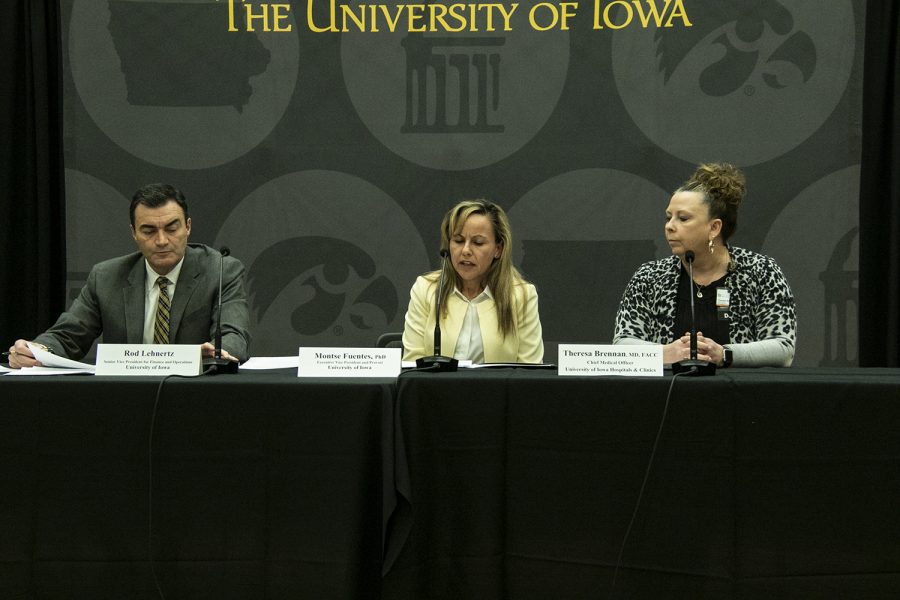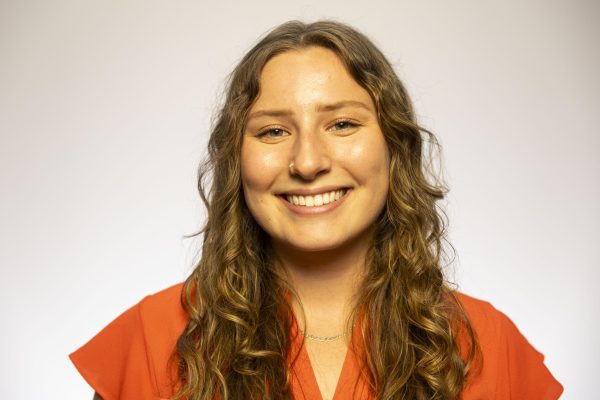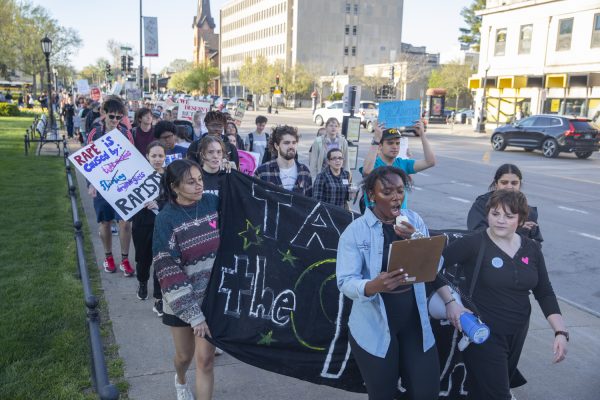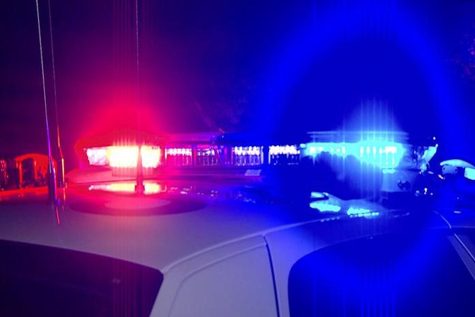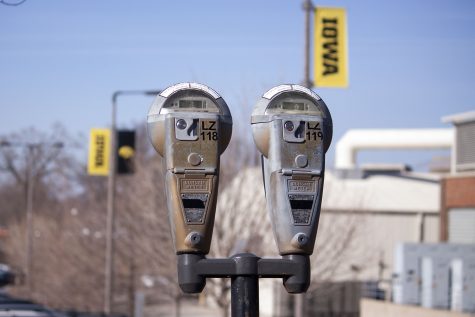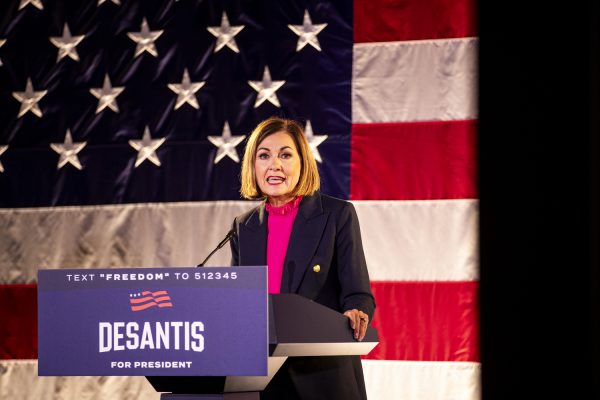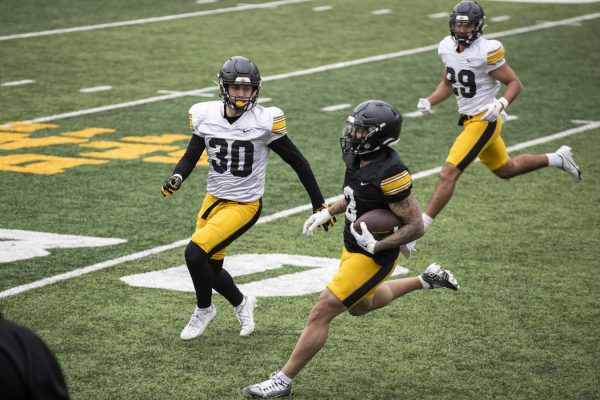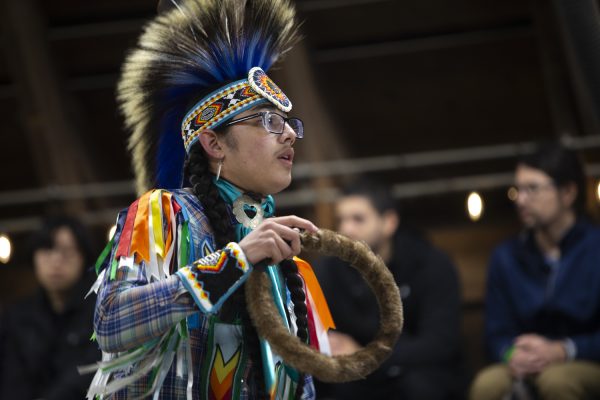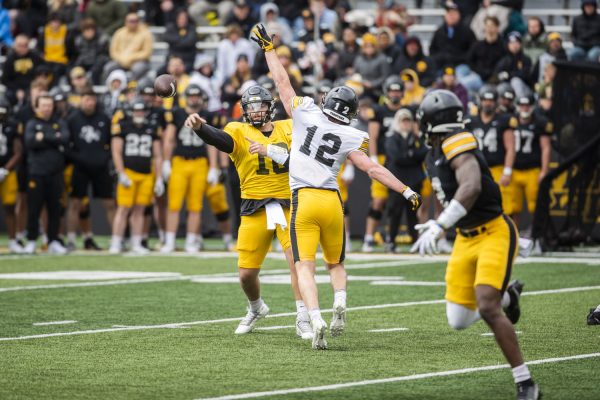Lessons learned: how University of Iowa administrators steered campus in a pandemic
A little more than a year after the UI initiated its COVID-19 response, UI administrators reflect on the sleepless nights they had while tasked with COVID-19 mitigation on campus.
A panel of University of Iowa administrators field questions from reporters during a press conference about the UI’s COVID-19 response at the IMU on Wednesday, March 11, 2020. (Jeff Sigmund/ The Daily Iowan)
March 19, 2021
In February 2020, University of Iowa Campus Health Officer Dan Fick said he spent zero time on COVID-19-related work. By March, Fick said he spent at least 50 hours a week on Zoom just discussing pandemic mitigation for the UI community.
“There were a couple of weeks where I was at work on the computer, at home on the computer, and asleep, and that was about it,” he said.
Fick said the months April and March of 2020 were tasked with searching for information about COVID-19 because no one knew what was going to happen. Before the pandemic, Fick had academic and clinical duties during his daily workday.
More than a year ago, UI administrators were met with a steep learning curve while being responsible for 31,730 students, 1,700 instructors, and 12,000 employees on campus.
UI Provost Kevin Kregel said he learned some important lessons on teamwork and leadership during the first year of the COVID-19 pandemic. The UI Critical Incident Management Team, including UI administrators and selected department heads, met on a daily basis at the beginning of the pandemic.
“We were equipped and structured and had a good knowledge base as to how to put together a team and what types of individuals we need leading those teams to really get out of out ahead of this,” Kregel said.
In the fall, the UI was making decisions on what COVID-19 testing method to implement on campus. Fick said the UI could have relayed information quicker to the UI community to prevent less confusion.
“Ultimately, I think within a week or so we did provide that, but even that week’s delay caused some skeptics on campus to wonder if we were in fact, talking with public health and epidemiologists when we were making determinations on who to test,’ he said.
The UI opted not to mass test students once they returned to campus, citing a high cost for little benefit. Fick said this was because public health advisors said rapid tests offered at the time didn’t have as high of accuracy, and negative tests would offer a false sense of security for students to disregard distancing measures.
“Looking back now, campuses spent millions of dollars testing and within weeks had outbreaks,” Fick said.
The University of Illinois at Urbana-Champaign tested more than 40,000 students twice a week with a rapid saliva test, but within the first two weeks of classes, 700 students had tested positive for the virus.
The UI’s COVID-19 outbreak this fall, however, reached 1,500 positive self-reported cases among students by Sept. 7, two weeks after classes began. At the time, the entire state of Iowa hovered between No. 1 and No. 3 among states for worst COVID-19 outbreaks.
No COVID-19 deaths or student hospitalizations have been reported. Administrators also cite lower employee cases as a sign of little classroom transmission.
In March, when the Critical Incident Management Team was trying to decide how to best keep students, faculty, and staff safe from the virus, UI administrators were desperately looking for COVID-19 supplies.
“We were going on a worldwide chase for masks, for gowns, for all of the things that were going to be associated with this,” Director of Finance and Operation Rod Lehnertz said.
The last crisis on the UI campus was the 2008 flood of the Iowa River. The river water flooded a large portion of the UI campus and cost the UI an estimated $743 million.
From lessons learned during the 2008 flood, Lehnertz said he learned to take complete records of everything during the pandemic to, in the future, possibly be reimbursed with federal funding.
University of Iowa Vice President for External Relations Peter Matthes said the University of Iowa’s Strategic Communication teams and administrators worked together to bring the UI campus community to recognition about COVID-19 when it came to wearing masks and social distancing.
“Compared to one year ago, whether that is social distancing, whether that is a consistent adherence to wearing masks, face coverings, that is a significant change in behavior,” he said.
UI students rose to the occasion during the pandemic, Fick said. He said students realized what was happening and made changes.
“We were anticipating the viral activity with the students to ramp up over the course of one or two weeks,” Fick said. “It ramped up the week before classes, so we were a week behind on some of our health activities for our students and so that was frustrating for a lot of people, but we quickly got caught up within a couple of weeks.”
Fick said he doesn’t have a good answer for when his job will go back to “normal” with non-related COVID-19 work and hopefully fewer sleepless nights. President Joe Biden told the nation he vowed the U.S. would be able to “mark our independence from this virus” by July 4. Iowa plans to open eligibility for the vaccine to all Iowa adults by April 5, though actual distribution of the limited vaccine will likely take months.
“I will be sticking with helping the campus with COVID-19 activities probably for the next couple of years as things move along,” Fick said. “I don’t have a crystal ball on that though.”



